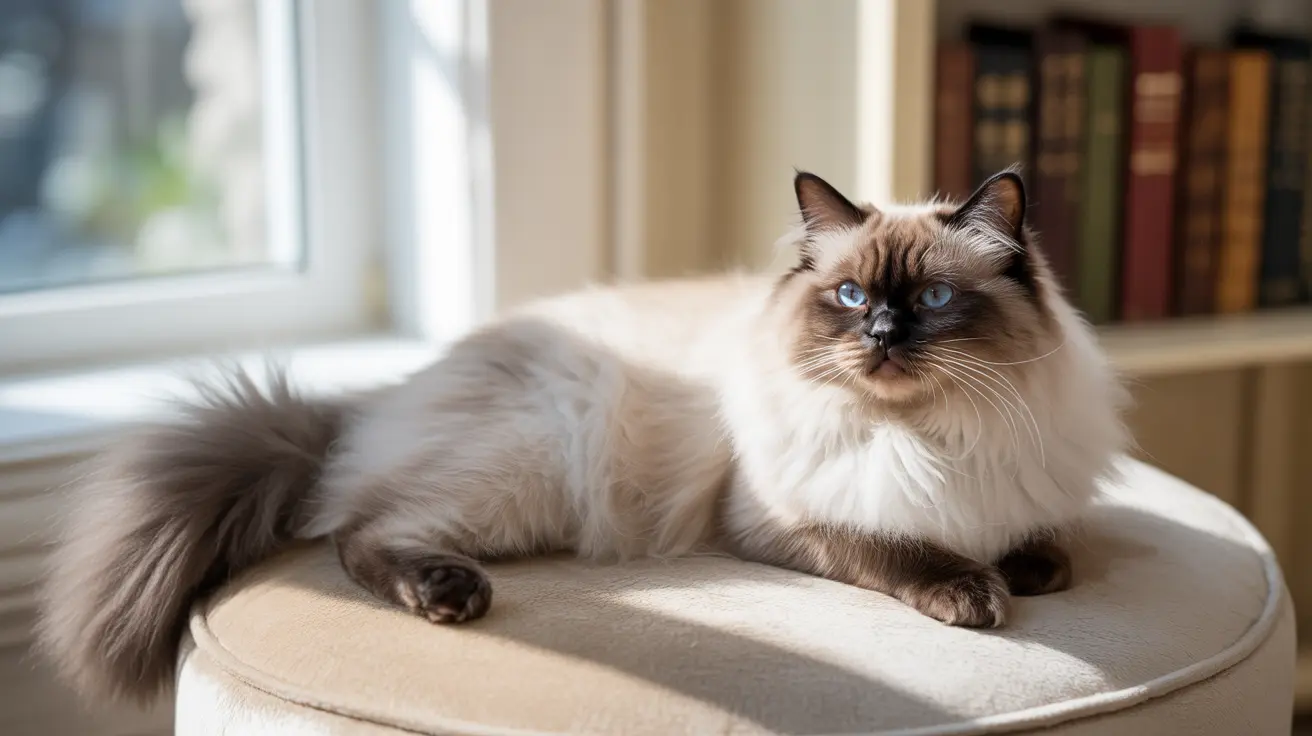Himalayan cats are renowned for their striking appearance, combining the luxurious coat of Persian cats with the distinctive color-point pattern of Siamese breeds. These elegant felines showcase a fascinating array of color variations that make them truly unique in the cat world. Understanding Himalayan cat colors involves delving into complex genetics, breeding patterns, and environmental factors that contribute to their stunning appearance.
In this comprehensive guide, we'll explore the science behind Himalayan cat colors, the various color points recognized by major cat associations, and the fascinating way these colors develop over time. Whether you're a breeder, potential owner, or simply a cat enthusiast, you'll discover what makes these cats such remarkable examples of feline genetics at work.
The Genetic Foundation of Himalayan Color Points
At the heart of the Himalayan cat's distinctive appearance is a fascinating genetic mechanism known as temperature-sensitive albinism. This unique trait is controlled by the tyrosinase (TYR) gene, specifically the Himalayan gene allele, which only allows color development in the cooler areas of the cat's body.
The genetics responsible for these striking patterns work in conjunction with various other genes that determine the specific colors and patterns that will appear in the points. This complex interplay of genetics results in the variety of color combinations we see in Himalayan cats today.
Common Himalayan Color Variations
Seal Point
The most common and recognizable color variation features dark brown to black points contrasting against a cream-colored body. Seal points are often considered the classic Himalayan look, with rich, deep coloring that creates a dramatic contrast.
Blue Point
Blue points display a softer, gray-blue color in their points, creating a more subtle but equally beautiful appearance. This dilute variation of the seal point requires specific genetic factors and is less common in the breed.
Chocolate and Lilac Points
These rare and sought-after colors represent some of the most unique variations in Himalayan cats. Chocolate points show warm brown tones, while lilac points display a pinkish-gray hue, both requiring specific genetic combinations to appear.
Color Development and Environmental Factors
Himalayan kittens are born almost completely white, with their point colors developing gradually over several weeks. This process is directly influenced by body temperature, which explains why the cooler extremities develop color while the warmer body core remains lighter.
Environmental temperature plays a significant role in color intensity, with cats living in cooler climates often developing darker points than those in warmer regions. This temperature-dependent color expression is one of the most fascinating aspects of Himalayan cats.
Show Standards and Color Requirements
For show-quality Himalayan cats, color points must be clearly defined and symmetrical. The contrast between body color and points should be distinct, and all points should be uniform in color. Additionally, these cats must possess the characteristic bright blue eyes that are a hallmark of the breed.
Frequently Asked Questions
How do Himalayan cats get their unique color-point pattern and why are they born white?
Himalayan cats possess a temperature-sensitive enzyme that only produces pigment in cooler areas of the body. They're born white because the mother's body temperature prevents color development in utero, with points developing only after birth when exposed to cooler temperatures.
What are the different recognized color points of Himalayan cats and which are the rarest?
Recognized colors include seal, blue, chocolate, lilac, flame, cream, tortie, and lynx points. Chocolate and lilac points are the rarest due to their requirement for specific recessive genes from both parents.
How does temperature affect the darkness and intensity of Himalayan cat color points?
Temperature directly influences color intensity, with cooler temperatures resulting in darker points and warmer temperatures producing lighter points. This is why extremities (ears, face, paws, and tail) are darker than the body.
Why do Himalayan kittens' points develop gradually over weeks, and when is their full color set?
Point color development is gradual because it depends on the cooling of body parts after birth. Full color typically sets by 18-24 months of age, though some cats may continue to darken throughout their lives.
Can the color of a Himalayan cat change with age or environmental conditions?
Yes, Himalayan cats can experience color changes throughout their lives due to temperature variations, age, and health conditions. Older cats often develop darker bodies, and seasonal temperature changes can affect point intensity.
Caring for Your Himalayan's Coat
To maintain the beautiful colors and coat quality of a Himalayan cat, regular grooming is essential. Daily brushing helps prevent matting and keeps the coat looking its best, while also allowing you to monitor any changes in color or condition that might occur over time.






